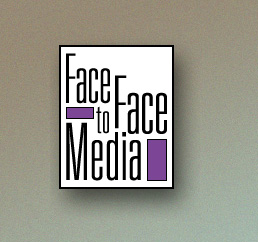
MediaUNDERSTANDING MEDIA LITERACY: INSIDE PLATO'S CAVE |
|
Key concepts of media literacy. An excerpt from Inside Plato's Cave
The key concepts are presented in the first module of Inside Plato’s Cave and are used throughout. These concepts can be applied to everything you learn about and teach about in media literacy. Key Concepts Used in Studying Media 1: All media are constructions. 2: The media construct versions of reality 3: Audiences negotiate meaning in media. 4: Media messages have commercial implications. 5: Media messages contain ideological and value messages. 6. Media messages have social and political implications 7. Form and content are closely related in media messages. 8. Each medium has a unique aesthetic form. 1: All media are constructions The media do not present simple reflections of what is around us. Rather, the media present carefully crafted productions that are the result of many decisions and determining factors. These are made by people with specific ends in mind. Technically, these productions are often excellent, and this, coupled with our familiarity with such productions, makes it difficult for us to see such productions as anything other than a seamless extension of reality. Len Masterman offered an example of this when he wrote about a The critical viewer’s task is to make these seams visible. We have to learn to take apart these constructions to see how they were made much like we might have taken apart toys when we were younger to see how they were put together. 2: The media construct versions of reality What the media are constructing is a certain representation of reality. We all have our own view of reality. We’ve been building it since the day we were born. The question is, where do we get it from? Much of it, other than what we experience for ourselves, comes from television, radio, newspapers, film, magazines. The media are responsible for most of the observations and experiences from which we build up our personal understandings of the world and how it works. Thus the media, rather than ourselves, to a great extent, give us our sense of reality.
There was a frightening illustration of this phenomenon when passengers of a cruise ship learned that their ship was on fire only when they turned on their television sets to a local new station. The fire was being broadcast live.
Much of our view of reality is based on media messages that have been preconstructed and have attitudes, interpretations, and conclusions built in. 3: Audiences negotiate meaning in media Basic to an understanding of media is an awareness of how we interact with media texts (TV shows, movies, radio programs, newspapers, the Internet). The second key concept concentrates on the ways in which the media contribute to the construction of reality. But we also have to realize that each of us brings something unique to the media – ourselves. If the media provide us with much of the material upon which we build our picture of reality, each of us finds or "negotiates" meaning according to individual factors: personal needs and anxieties, the pleasures or troubles of the day, racial and sexual attitudes, family and cultural background, moral standpoint, and so forth. All of these will affect our interpretation of what we are watching on television. And because each of us brings with us such different experiences, we have to be open to the fact that different people will experience the same television show in different ways. 4: Media messages have commercial implications Most media production is a business, and must make a profit. The economic basis of television has a very real effect on content, technique and distribution. Networks look for audiences to be delivered to sponsors. Program content makes viewers targets for advertisers and organizes them into marketable groups.
People who watch soap operas, for example, can also purchase magazines that summarize plots, follow the lives of the actors in the tabloids, and exchange gossip with fans over the Internet. Sport fans can buy memorabilia and star-endorsed products, play fantasy versions of the game on the Internet, or read about the sport in the newspaper. In a real way, such people are constructing their own fantasy universe based on a favourite show. The question to ask is how much of their own personality is shaped by such commercial forces? Questions of ownership and control are central: a relatively small number of individuals control what we watch, read and hear in the media. The companies involved here include Time/Warner, Disney, Rupert Murdoch’s News Corporation, General Electric, Tele-Communications Inc., Viacom and CBS. This concentration of ownership has far-reaching implications for how we perceive our world and our place in it. 5: Media messages contain ideological and value messages All media products proclaim values and ways of life. And that way of life and those values are usually those of the established social structure. This makes sense when you consider that the media and advertisers are the chief beneficiaries of the established social structure. The mainstream media convey, explicitly or implicitly, ideological messages about issues such as the nature of the good life and the virtue of consumerism, the role of women and men in society , the acceptance of authority , and unquestioning patriotism . While the media may not be directly responsible for creating values and attitudes, they legitimize and reinforce them. The critical viewer tries to uncover these ideological messages and values-systems by looking out for such issues as what groups are represented, what groups are left out. Concentration of media ownership is also important in this respect. The ideologies, values and attitudes portrayed on television are those of the people who decide what to put on television. 6. Media messages have social and political implications. The media have great influence in politics and in forming social change. Television can affect the election of a national leader on the basis of image. This has been clear since the 1960 Kennedy-Nixon debate. The media also involve us in concerns such as civil Political parties use television because this is where the voters are. No campaign rally can attract the number of voters that will see a candidate on the evening news. Politicians speak in sound bites to make the news. The biggest single cost in political campaigning is for television ads. While the ads reach a great many people, they can also backfire. In the 1993 federal election, the Progressive Conservative party went from being a majority government in power to a defeat that cost them all but two of their parliamentary seats. There were many reasons for this stunning defeat but some observers believe that a critical error was a television spot aired just before the election. As MacLean’s reported in May 19, 1997, the 30-second spot “ . . . showed unflattering photographs of Liberal leader Jean Chretien. The images emphasized his contorted mouth, the result of a birth defect, while the ad asked: ‘Is this a prime minister?’” The ad provoked immediate outrage from politicians and the public. In the 7. Form and content are closely related in media messages As Marshall McLuhan noted, “The medium is the message.” Each medium has its own grammar and bias and codifies reality in its own particular way. Thus, different media reporting the same event will create different impressions and different messages. For example, television works best with images. Therefore, the evening news will be more likely to show fires, earthquakes, and rioting protesters than the latest round of talks between the nurse’s union and the hospital authorities. A newspaper or magazine cannot show live pictures, but they can give you a more detailed background on why a fire started or what were the issues that caused the riot. To see this concept in action read today’s paper, listen to today’s news on the radio, and watch the evening TV news. They will present, more or less, the same subjects but there will be a great difference in how they present them.
8. Each medium has a unique aesthetic form Media education is not only about understanding media texts and their implications for our culture and society, but also about how to enjoy and produce them. Just as we notice the pleasing rhythms of certain pieces of poetry or prose, so we ought to be able to enjoy the pleasing forms and effects of the different media. Our enjoyment of media can be enhanced by an awareness of how pleasing forms or effects are created. Television is at its best with live events. There is an extra thrill and pleasure in watching a sporting event live on television that cannot be got from reading about it or watching a replay of it after it is over. And television offers a real sense of sharing and participation in its coverage of world events like the opening of the Olympics or the funeral of Princess Diana.
|








